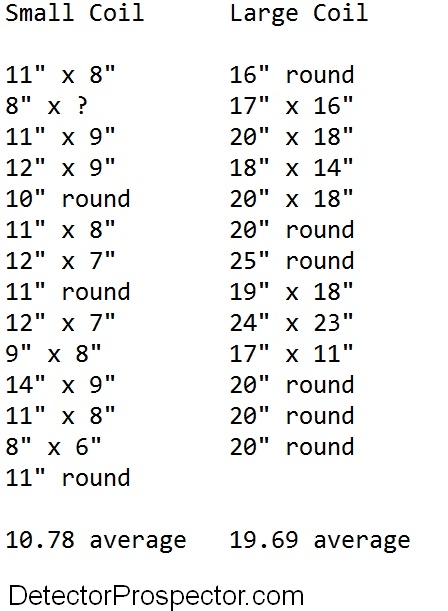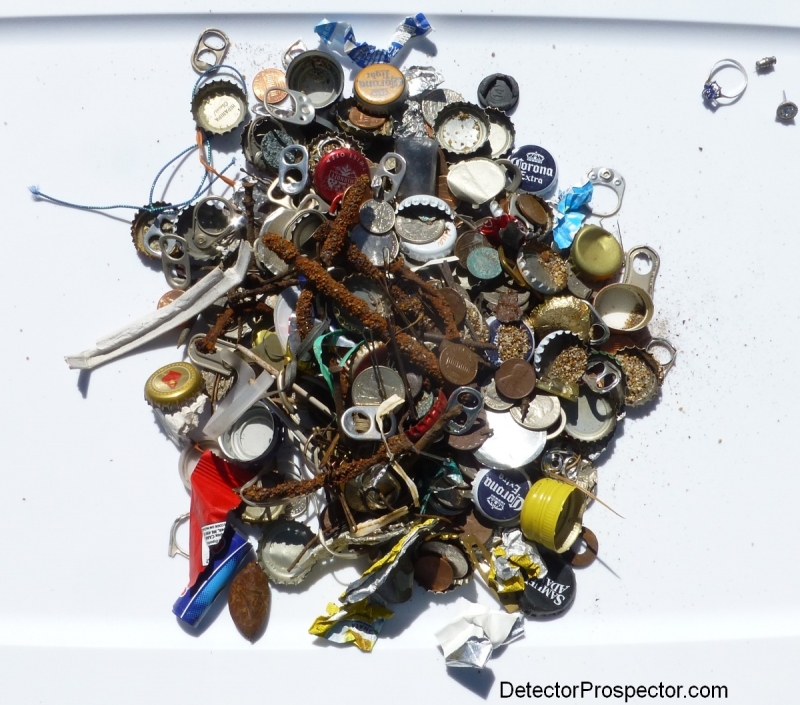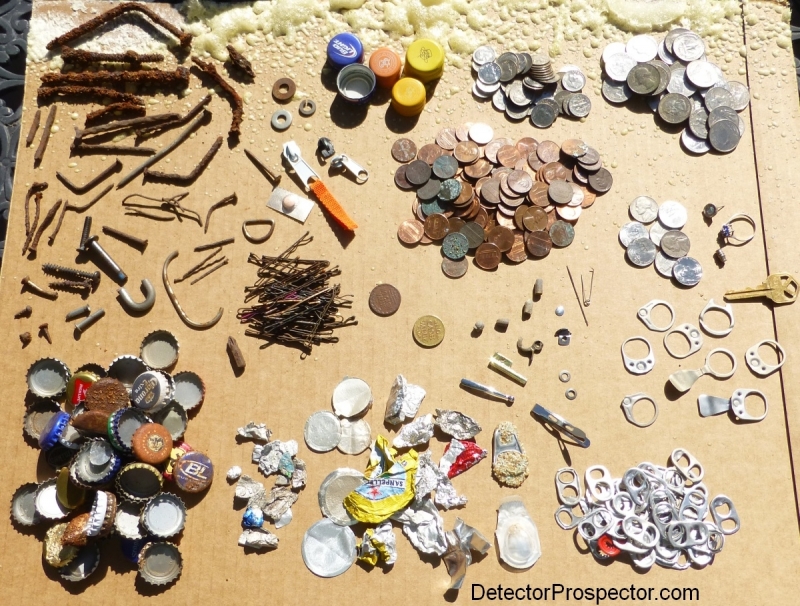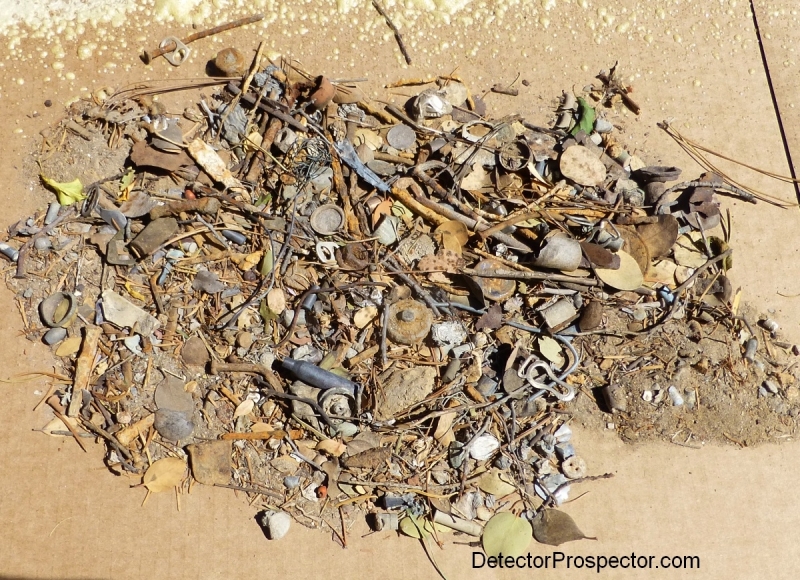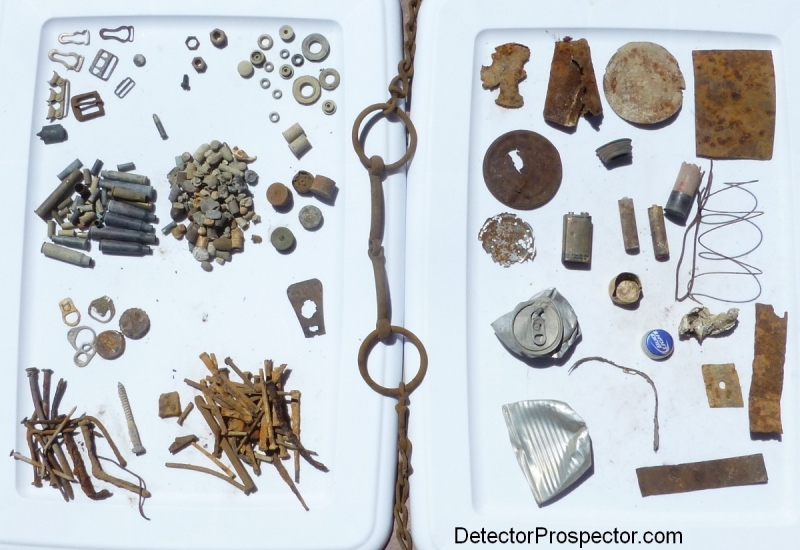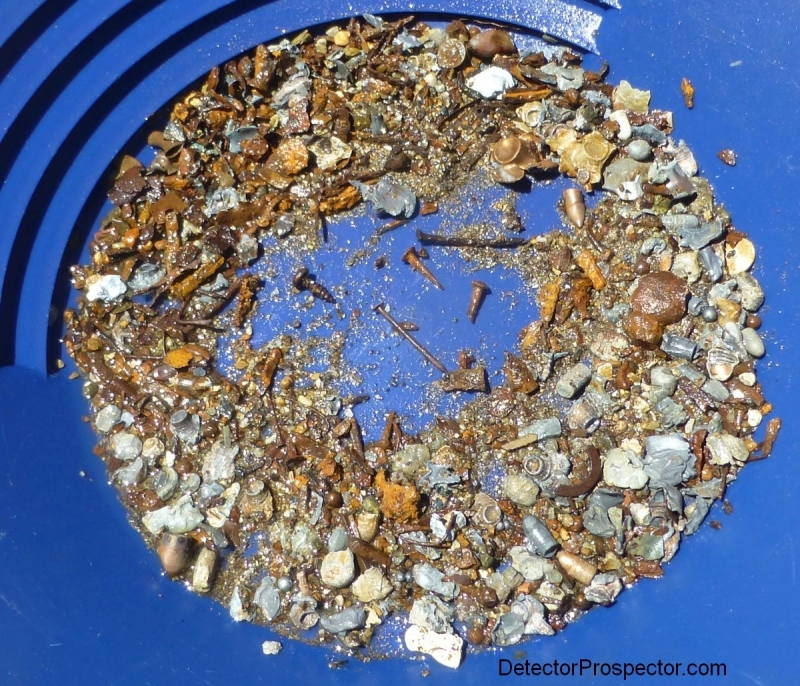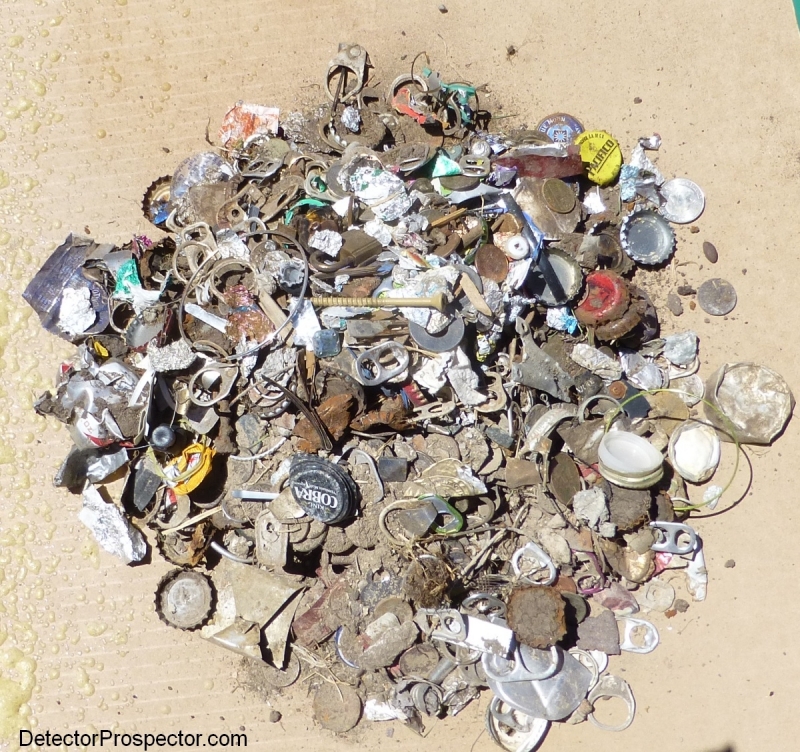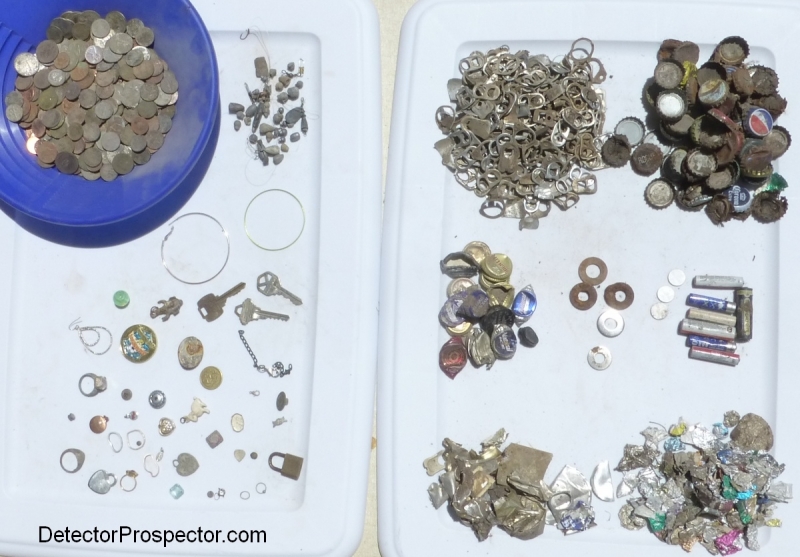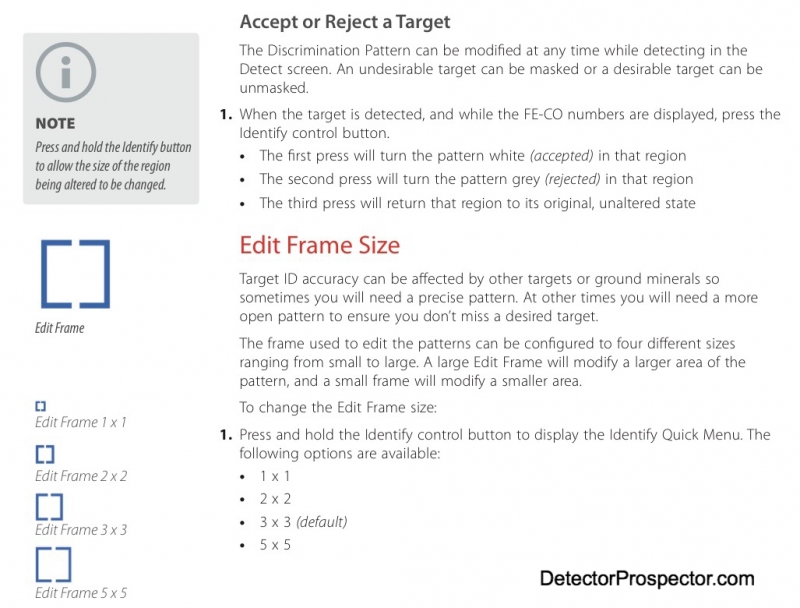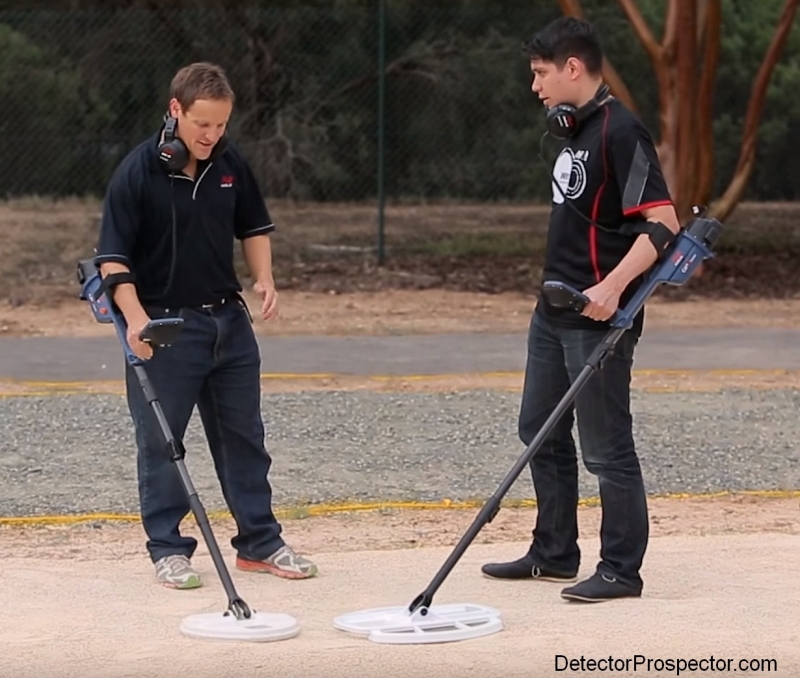-
Posts
19,764 -
Joined
Content Type
Forums
Detector Prospector Home
Detector Database
Downloads
Everything posted by Steve Herschbach
-

Nokta AU Gold Finder ID Filter & IMask
Steve Herschbach replied to TRINITYAU's topic in Nokta / Makro Metal Detectors
Hi Ray, I am happy to help but it may be tomorrow morning before I make a detailed reply. Thanks! -
I thought it would be interesting to revive this thread in light of the release of the GPZ19 coil to see how close Minelab came to the suggestions. I tallied up the numbers and averaged the large dimension for both small and large suggested sizes but all the info is there to draw your own conclusions. Next up - I want that small coil. I do think larger first was best for most people but sooner or later a small coil for the rest of us would be appreciated.
-
Man oh man that has got to be exciting Bob. Chris and I hope to be doing a little of the same later this summer. Best of luck to you!!
-

Fisher Rumors
Steve Herschbach replied to Digger Jones's topic in First Texas - Bounty Hunter, Fisher & Teknetics
Actually the last thread on the subject is at but nothing new since then. -
Great first outing Dean! The GPX 4500 is a real bang for the buck machine for sure.
-

Reports On MX Sport Firmware Update - Post Here
Steve Herschbach replied to a topic in White's Metal Detectors
A well done review not only of field performance but the physical attributes of the MX Sport at http://www.dankowskidetectors.com/discussions/read.php?2,108553 -

V3i Poor Performance
Steve Herschbach replied to Johnnysalami1957's topic in White's Metal Detectors
There should be a warranty on the repair so best bet would be to contact White's again. Besides, what about the person that buys your detector - are you going to disclose it is not functioning properly? -

When There Is Some Good Beach Erosion......
Steve Herschbach replied to Rob's topic in Metal Detecting For Jewelry
Rob, you are way smarter than I, just digging fabulous stuff and skipping the trash - why did I not think of that? I have found a lot of gold rings over the years but have been shy in gemstones. You are killing it! -
I am glad it made you feel better because that was the goal. Way too often all we see is a picture of the gold or coin etc. with no context of how much junk got dug to make it happen. It does lead to unrealistic expectations for the new people looking at the forums. I can cherry pick with the best of them when it comes to coins but if you want gold you are going to dig a lot of stuff that is not gold.
-

Video - Minelab's Test Garden In Use
Steve Herschbach replied to Steve Herschbach's topic in Minelab Metal Detectors
Good eyes Chris - all I saw was pick digging, totally missed person (me) in background. -
The finds were on the dry beach Fred. 95% of my beach rings come out of the water. I actually was hoping more for old coins. People have been on those beaches since the mid 1800s losing stuff. I did lean more to low tones for that reason so my finds are heavy on the change. I did get a few square nails so old coins will happen at some point once I find the magic spot. As it was all I got was a single wheat back penny. I generally do not mind trash as long as the digging is easy, and it gets no easier than the beach. Besides, somebody has to clean it up so may as well be me! All that park stuff is tot lots or popping shallow targets with a screwdriver - no hole digging.
-
You can edit a screen so that light areas go beep and gray areas do not (target rejected). All the frame does it let you choose how many blocks to edit at a time. If you need to block out a big chunk a larger edit frame makes sense. if you are working on the details and for areas that are not exactly square smaller frame sizes are needed. The 1 x 1 block corresponds to exactly one place on the screen that has one reading, like 12-24. If you just wanted to block 12-24 you use the 1 x 1 frame and turn that location gray. Very few items read that tight, so you might want to block every reading surrounding 12-24 (11-23, 11-24, 11-25, 12-23, 12-25, 13-23, 13-24, and 13-25). This would mean you had to edit nine locations one at a time using the 1 x 1 frame. Or you could use a 3 x 3 frame and block that whole 9 segment area in one shot. Default is 3 x 3 (nine segment block). The largest 5 x 5 knocks out 25 segments at one time. That is all it is - an editing function. It does nothing else except block out or open areas on the screen. If you always use a wide open screen it is a useless function because all frame size is for is setting up white/gray patterns on a hunt screen. An example http://www.minelab.com/usa/treasure-talk/beach-hunting-with-the-ctx-3030-part-3
-
This thread is so people don't think metal detecting is just digging good stuff. I do a lot of detecting where I just toss stuff in a pile for sorting later. Time to clean house so here are a few piles and some notes. First up - learning session with Minelab GPZ 7000 at Lake Tahoe beach. Fresh water lake but very mineralized beaches, loaded with magnetite sands and hot rocks. Just digging everything, and did find a ring, but just a little silver one with fake stones. Basically coins except nickels and zinc pennies go lo-hi tone. Only other lo-hi tones normally nails. Everything else hi-lo tones. First photo the pile, next photo sorted out so you can see most common trash items. Call this BEACH TRASH Next up mostly stuff found nugget detecting, but also some park detecting snuck into that pile. The sorted pile shows trash you might find nugget detecting. Nuggets of course got pocketed as found so nothing to show there. Call this NUGGET DETECTING TRASH. Extra photo showing volume of small trash targets not worth trying to sort out.... And finally some park detecting with various detectors, mostly DFX and Gold Racer plus Racer 2 and Deus. I am digging a lot of trash items for educational/learning purposes while comparing machines. The sorted pile only shows common trash; I discarded all the weird stuff. Call this PARK TRASH. Anyway, I hope this shows that it is not all digging "good stuff" and also an idea what the most common trash items are for people who have not done this sort of thing before.
-
There is no doubt Minelab files lots of patents. Since 2000 more than all the other players combined. They are given a lot of grief over how the patents are written and just how new some of them really are, but this is a part of the detecting game Minelab seems to have mastered. They not only come up with new methods, but have been very good the last twenty years at blocking progress at other companies by way of patents. The number one reason I heard from the competition over the years about why nobody made units that seriously competed with the Minelab PI detectors was.... patents. I actually am a bit surprised how few patents relating to basic detecting technology are filed by most of the competition these days, the only real exception being White's. First Texas has been active, but almost all relate to a walk through detector. Garrett has a new one for a waterproof housing design, but that's about it.
-

Here's One That Didn't Get Away
Steve Herschbach replied to LuckyLundy's topic in Detector Prospector Forum
Now that's a chunk of gold - good work Rick! -
What strick said. The accept/reject function does allow you to choose how many blocks to edit at once, but it is just an editor option. When I think sizing I tend to think in terms of "sizing the target" via the pinpointing methodology to help determine whether the item found is dime sized or sprinkler head sized. I tend to hunt wide open screen with full tones so I rarely reject items outright. That being the case this function gets little use on my machine.
-

Anyone Here Dredge???
Steve Herschbach replied to Dean Stone's topic in Gold Panning, Sluicing, Dredging, Drywashing, Etc
For many years dredging was about the only way I found gold in Akaska. As a mining method it is far more reliable and consistent than metal detecting. However, with extreme low gold prices around 1998 I hung it up as too much miserable cold work. My last major use of a gold dredge was about three years ago. Ironically I figured when I moved south I would take it back up again, the attraction of warm water being too incredible to ignore. The minute I made the move the moratorium was imposed in California. So much for that idea. I did sell most of my gear when I left Alaska but I do have a few odds and ends to dispose of. The only thing air related I have left is a hookah regulator which I will put in classifieds today. -
You also get to see the new GPZ 19 coil being tested. There is explanatory text to accompany the video at http://www.minelab.com/usa/go-minelabbing/treasure-talk/in-the-ground-is-where-detecting-really-counts
-
USPTO Patent Application 20160041292 , Discrimination method of a metal detector. http://www.freshpatents.com/-dt20160211ptan20160041292.php "In particular, the present invention is a discrimination method that is insensitive to the signals from both resistive and reactive signal components from the soil. It was discovered for the purpose of the present invention that the presence of resistive signal components from the soil may be confused with resistive signal components from metallic targets, and thus identifying the time constant spectrum of the metallic target yields in unsatisfactory results in the presence of substantial resistive signal components from the soil. The discrimination method offered by the present invention is insensitive to both resistive and reactive signal components from the soil, which may also include a component due to a substantially uniform conducting half-space (such as a saline soil)." and "One advantage is that it gives more information about the target, and therefore it confers a greater discrimination capacity. For instance, two different targets may have the same one-component approximated time constant spectrum, but they have different two-component approximated time constant spectra. Therefore, using a two component approximated time constant spectrum may allow these two targets to he distinguished from each other." Date. Minelab Electronics Pty Limited patents. 02/11/16 Discrimination a metal detector 08/06/15 Signal processing technique for a metal detector 06/18/15 Metal detector 05/28/15 Metal detector 02/05/15 Method for detecting fast time constant targets using a metal detector 11/14/13 Support arrangement for an implement 10/24/13 Communication between a sensor and a processing unit of a metal detector 09/12/13 Method for displaying metal detection information 06/20/13 Transmit signal of a metal detector 06/13/13 Method for separating target signals from unwanted signals in a metal detector 03/07/13 Metal detector sensor head 06/14/12 Metal detector with at least one transmit/receive switch 09/29/11 Metal detector sensor head 11/11/10 Metal detector with improved magnetic response application 06/17/10 Rectangular-wave transmitting metal detector 06/17/10 Metal detector for salt soils 06/10/10 Constant current metal detector with driven transmit coil 12/24/09 Real-time rectangular-wave transmitting metal detector platform with user selectable transmission and reception properties 12/24/09 Multi-frequency transmitter for a metal detector
-
Nobody here is making the case that multi frequency detectors are really hot on small gold (2020 edit - this is no longer true with Equinox). They are not and it has never been the case. All VLF detectors made specifically for gold prospecting operate at a single frequency for a reason. An X-Terra 705 is a better gold prospecting detector than a CTX 3030 and for almost $2000 less. Early marketing of multi frequency machines talk about incredible frequency ranges and imply all the frequencies are running at full power and actually doing something. The CTX is said to operate at 28 frequencies ranging from 1.5 kHz to 100 kHz. People see 100 khz and think "wow, that has to be hot on gold". Thankfully Minelab seems to have backed off the multi frequency marketing gobbledygook somewhat. We have to focus on the reality of what the machines do and how they actually perform and ignore all the other stuff. The fact is that multi frequency machines in actual use act like lower frequency VLF detectors. They are optimized for coin detecting and the major benefit of the multiple frequencies is A. exceptional target id accuracy and B. the ability to ground balance to salt water and mineralized soil simultaneously. The machines do very well on jewelry but when gold items are under a gram performance drops off rapidly. And while the multi frequency designs push accurate target id to great depths absolute all metal depths are lacking. For both these reasons multi frequency detectors weakest performance area tends to be gold prospecting. Nothing is perfect at everything.

